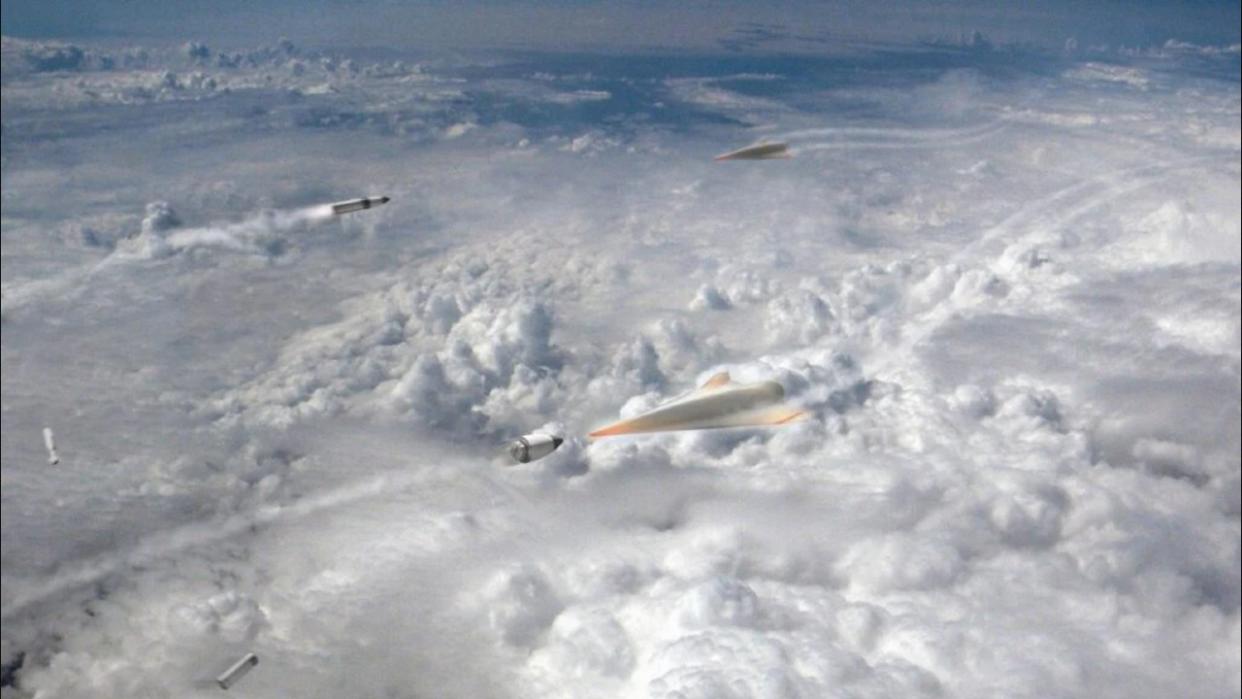Boeing to test DARPA's upcoming 'Glide Breaker' hypersonic interceptor

The Pentagon's Defense Advanced Research Projects Agency (DARPA) has chosen Boeing to develop a prototype and conduct flight testing of its upcoming Glide Breaker hypersonic interceptor.
An interceptor is a weapon designed to destroy other missiles mid-flight before they reach their targets. Glide Breaker is a planned huge leap forward in missile interceptors, as it's designed to target the highly maneuverable class of weapons known as hypersonic glide vehicles, which are able to execute abrupt "zig-zag" maneuvers as they glide unpowered through Earth's atmosphere at speeds of Mach 5 and higher. (Mach 1 is the speed of sound — about 767 mph, or 1,234 kph, at sea level.) This combination of speed and maneuverability makes such weapons much harder to defend against than traditional missiles.
"Hypersonic vehicles are among the most dangerous and rapidly evolving threats facing national security," Gil Griffin, executive director of Boeing Phantom Works Advanced Weapons, said in a Boeing statement announcing the four-year agreement with DARPA, which involves wind tunnel testing, simulations and flight testing of a Glide Breaker prototype. "We're focusing on the technological understanding needed to further develop our nation's counter-hypersonic capabilities and defend from future threats."
Related: DARPA's hypersonic 'Glide Breaker' could blast missile threats out of the sky
Boeing's contract with DARPA will fund simulations that will evaluate Glide Breaker designs using wind tunnel studies and what is known as computational fluid dynamics, computerized models of how a fluid — in this case air — interacts with an object such as a missile interceptor.
In addition, Boeing will conduct testing to evaluate how Glide Breaker's jet thrusters affect its overall aerodynamic performance as they fire to help the vehicle maneuver into position to intercept and defeat hypersonic weapons in flight.
Because Glide Breaker is designed to intercept rapidly emerging technologies unlike the weapons systems of the past, Boeing will have to use simulations that model the interactions that take place between the air and the interceptor at extreme speeds and altitudes.
"We're operating on the cutting edge of what's possible in terms of intercepting an extremely fast object in an incredibly dynamic environment," Griffin said in the statement.

RELATED STORIES:
— US military scrubs hypersonic missile test launch from Cape Canaveral Space Force Station
— DARPA's 'Glide Breaker' hypersonic missile interceptor program enters new phase
— Space Force wants 'Foo Fighter' satellites to track hypersonic missiles
A Pentagon contract announcement dated Sept. 8 states that Boeing's Glide Breaker development agreement with DARPA is worth $70,554,525. While a few notional images have been published by DARPA, little is known about what the final design or overall capabilities of Glide Breaker will be. DARPA's official page for the program is scant on any details.
Boeing states this Phase 2 contract will "provide the foundation for future operational glide-phase interceptors" capable of defeating the ever-evolving threat of hypersonic glide vehicles.
In 2020, aerospace contractor Aerojet Rocketdyne received an initial Phase 1 contract worth nearly $20 million to develop "enabling technologies" for Glide Breaker. Phase 2 contract solicitations, for which Boeing was just awarded this agreement, opened in 2022.

